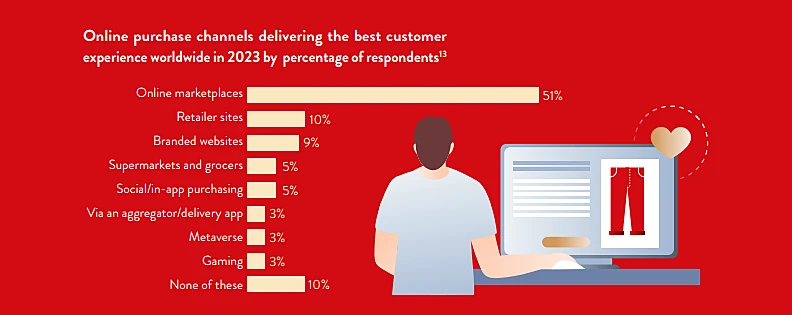Marketplaces currently account for around 67% of all B2C e-commerce sales worldwide – a significant jump from just 40% ten years ago. Drivers for this impressive growth include consumer preference for variety, competitive pricing and convenience.
As a result, online marketplaces top the charts significantly when it comes to customer satisfaction, with over 50% of consumers citing marketplaces as delivering the best customer experience in terms of purchase channel.35% even say that they get their inspiration from marketplaces.

With this strong preference for marketplaces and a choice of multiple brands, first-party sales are expected to drop by three percentage points by 2027 whilst third-party sales through marketplaces will see a growth of three percentage points in the same period.
On a more fundamental level, there are four main drivers as to why B2C companies in particular are launching these types of marketplaces.
First of all, they draw in customers with a range of delivery options; secondly, they offer competitive pricing and good customer service; thirdly, they are simple to operate and yield attractive commission rates; and finally, they also produce valuable data that they can use to optimise and personalise customer experience.
It’s for these reasons and more that marketplaces are becoming popular not only among consumers but also among brands looking to expand. That being said, adopting this new business model isn’t always smooth sailing and there are a number of challenges along the way.











